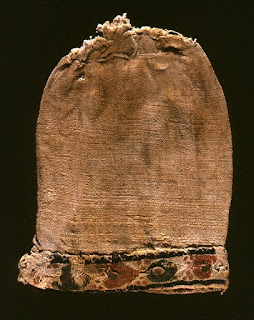BANDAGE
Fragment of a mummy bandage, made from a linen fabric, light beige in colour with some discoloration in dark beige.
It is decorated with the painted representation of the god Anubis with human body and jackal's head, standing, with the head in profile facing right and the body in frontal view with the arms raised. He is wearing a skirt with black horizontal lines. The fabric is damaged at the height of the figure's pelvis; part of the left foot end the whole of the right leg are missing.
GRAECO-ROMAN PERIOD
MUSEO ARQUEOLÓGICO NACIONAL
http://www.globalegyptianmuseum.org/record.aspx?id=7668
































